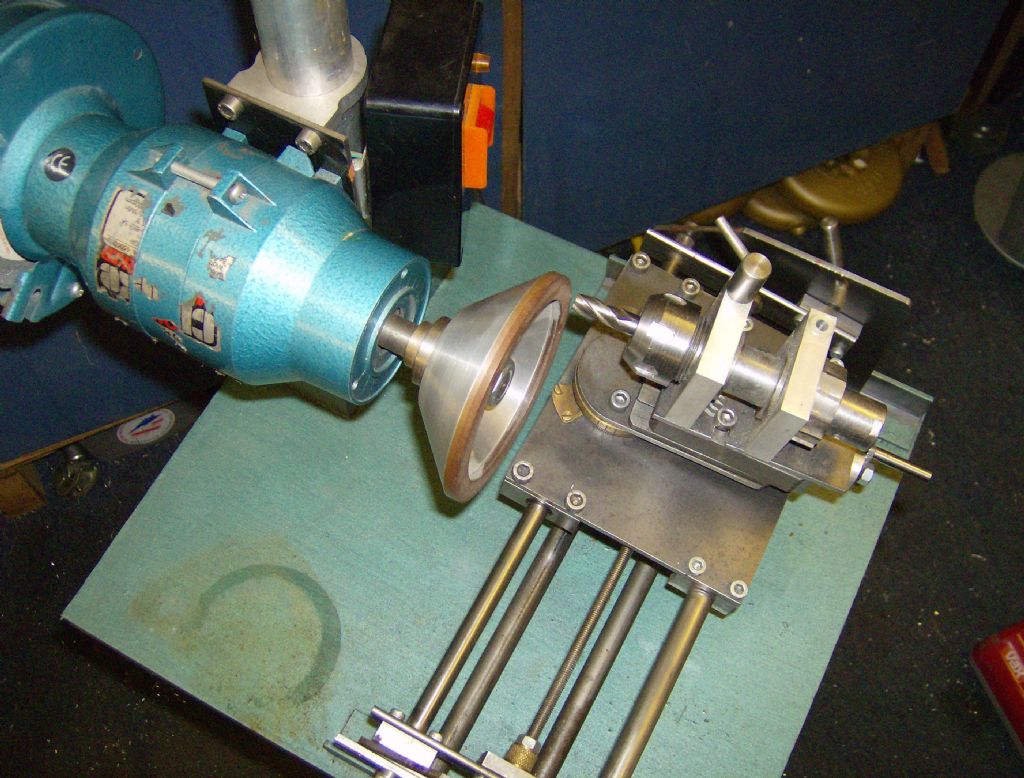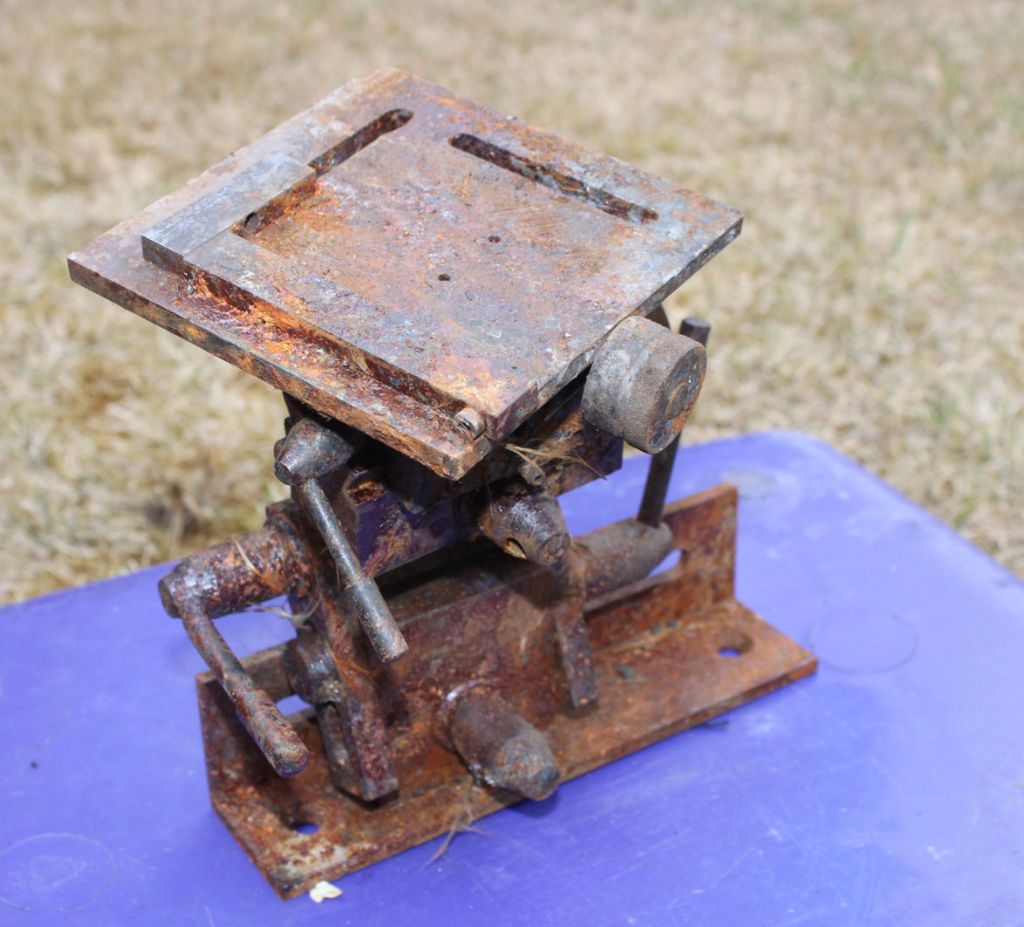Kevin,
As suggested I have (after several attempts) managed to upload some pictures to my albums.I wouldn’t suggest copy this layout, but it may give you some ideas. Some comments:
The tilting table works well, and is easy to make – I used phosphor brone bearings and rods from an old dot-matrix printer.
The top slide uses the same mounting system as my mini-lathe top slide, and is theoretically interchangeable. It has a scale marked in degrees with a vernier to 15 minutes.
The grinder is just a cheap clarke one but the bearings seem very good. The shaft is centred and by holding one end in the three-jaw and the other on a rotating centre I was able to turn the mount for a diamond wheel in place. The wheel rotates with no sign of shake or vibration.
You can flip the grinder/spindle end for end.
The base is 1 1/4″ ply and the vertical pillar is a bit of scaffold pole found at a roundabout.
The slide took several bouts of lapping and scraping before I was happy with it. It now works well, but the small size of the handle made it hard to use when it was less than perfect – I should put a square on the shaft and make a long, detachable handle.
The tool holder is removeable, it takes ER25 collets, the front and rear mounts are adjustable, only the front one has a clamp. At the tail end is a ratchet for angular setting with 12 notches that deals with most cutters.
The leadscrew is just M6 rolled studding, unfortunately it is the ‘wrong hand’. It has an index graduated in 40 steps 1~= 0.001″
With a diamond tipped wheel dresser you can get a really good surface on a normal wheel at the other end of the grinder – it pays to have one dressedand balanced in place as teh ‘flywheel effect’ helps keep the diamond wheel turning smoothly. I use brush applied paraffin as a lubricant for the diamond wheel, and apply very small cuts.
The table clamps are either end of a rod through some 1/2″ tube and run in curved slots. The whole assembly moves back and forth on two ‘rails’ of angle iron and a similar single ended clamp locks this movement. Adustment of the spinlde is hit and miss by loosening the clamps on the pillar.
There could be lots of improvements – a proper spindle closer to the pillar, a smoother and screw-controlled movement of the main assembly, bigger dovetails on the top slide and a better handle, a left hand thread on the lead screw. Changes I can make are adding stops and some sort of additional grit shielding for the slide bars. A steel instead of brass detent for the ratchet..
Neil
Here’s a couple of useful shots:
Kevin Bennett.



 ),
),







